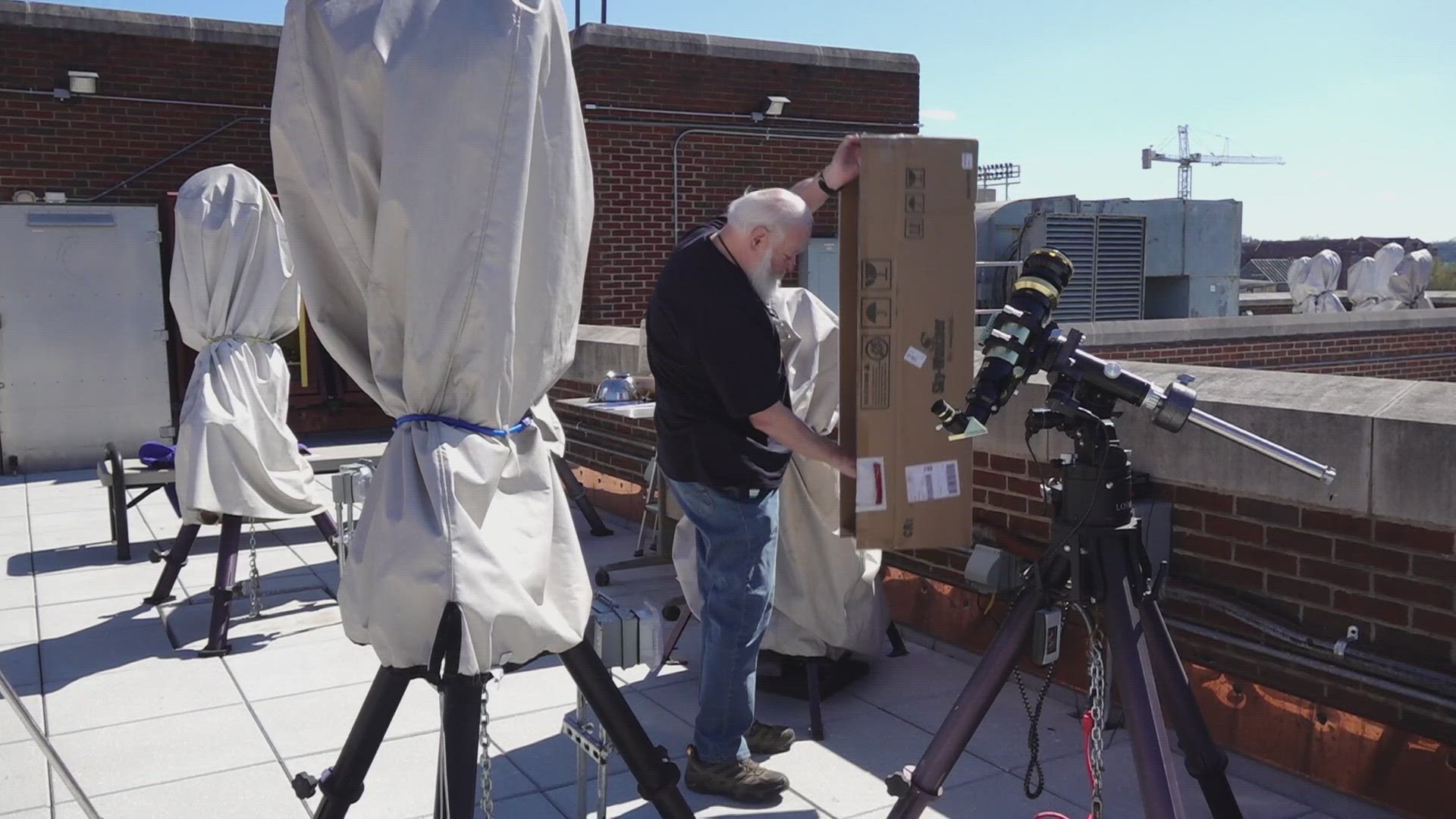KNOXVILLE, Tenn. — Paul Lewis is the Space Science Outreach Director at the University of Tennessee. He says people looking at the partial solar eclipse in East Tennessee should wear eclipse glasses the whole time, or risk permanent eye damage.
"Eclipse glasses should not be used with anything else, like binoculars or other optical instruments, Lewis said.
"That's why they're not safe to use with an optical instrument that will do that to your retina, it's permanent, which means you cannot get it fixed," said Lewis. "And you'll have a blind spot for the rest of your life. So you need to be careful and watch kids. And it's just not the right kind of device to be used with anything else. They're simply for putting on and looking directly at the sun."
However - Lewis says there are other ways you can safely view the solar eclipse, with some simple tools at home.
A colander is usually used to strain pasta or rinse vegetables, but it can also be used to look at the eclipse.
"You can see the apertures in the colander and then the light passes through and it will project on the ground or whatever you project it on to, project it on your hand if you want to," said Lewis. "It will show you the crescent shape or the cookie bite that the moon takes out of the sun as it crosses the disk."
"The farther away from the ground that you hold the colander, the bigger the projections will be. but, they won't be as sharp," Lewis said. "Every single hole will project the crescent that you see of the sun," said Lewis.
Now, it's time to get crafty. Lewis said a pinhole camera can be made at home to look at the eclipse. He used "easy-to-find" items to make it.
"What I've done here is we've taken the bottom of an aluminum pie tin, I've taken a paper clip, and sharpened it. Poke a pinhole and thus the name pinhole camera. And we set it over here so that we can get the shadow of the sun with the box, meaning that they line up together."
A piece of white paper is taped to the inside of the box, and that is where you will see the projection of the sun.
"That pinhole provides an aperture for the sunlight to pass through," Lewis said. "And it projects onto the piece of white paper that you've taped to the bottom of the box, you'll be able to again see the cookie bite as it progresses across the disk of the sun."

